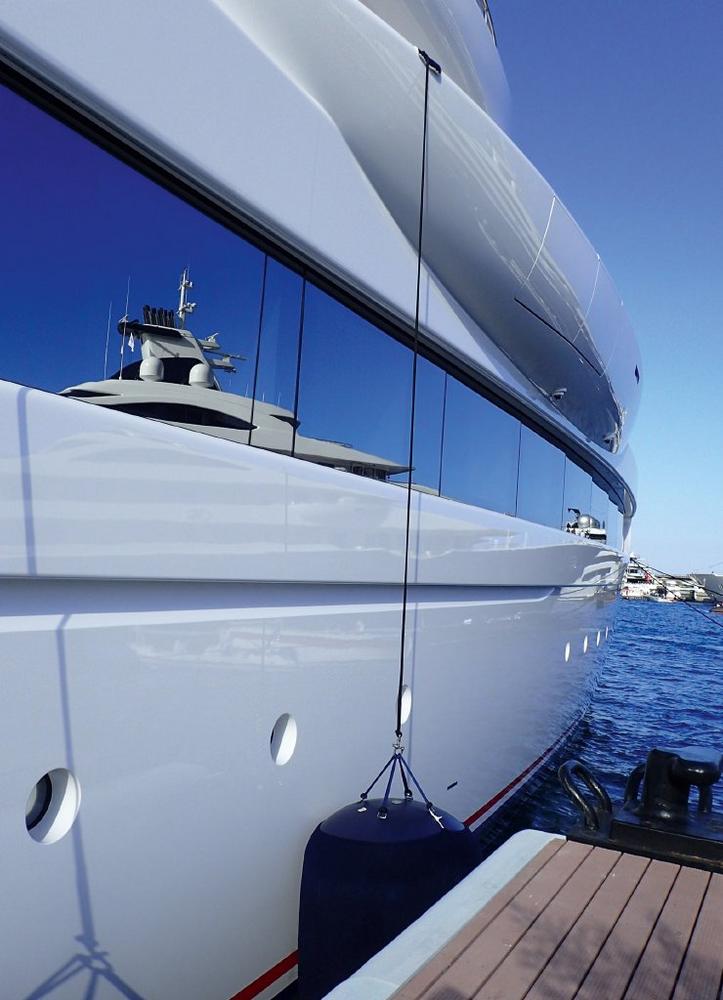Airborne rust is iron dust that rusts in the air. The particles usually originate from nearby metal objects and settle on other surfaces. This is a threat that also exists in ports and shipyards. For example, one source of contamination for a nearby yacht may be a ship being subject to water jet or high-pressure cleaning. “But use caution: choosing the right treatment for such contamination requires careful analysis. Treating the surface incorrectly can have expensive consequences,” says Pavel Jeljakin, Project Manager R&D at Wrede Technology GmbH (WRETEC). The Hamburg-based company specializes in the scientifically sound analysis of yacht coatings and has developed a special procedure to identify airbone rust and the appropriate treatment method.
The conventional method for identifying and treating contamination with rust particles involves macroscopic, visual inspection of the damage, which can lead to incorrect or superficial treatment of the damage. This is why the procedure developed by WRETEC goes beyond assessment by the naked eye. From microscopic, three-dimensional examination of representative areas of damage, precise documentation of the pattern of damage can be made for possible claims for compensation. There is also an accurate reference for before and after comparisons. “Both quantifying statements about rust particle size and qualifying statements about particle type are made. With this non-destructive method (NDT), in addition to type and size, the degree of particle corrosion is measured before treatment”, explains Jeljakin. WRETEC’s experts also analyse the depth of rust particle penetration into the paint. This makes it possible to assess the extent of damage far beyond visual observation: If the paint surface is mechanically destroyed, oxidation products can penetrate below the paint surface into the coating and cause consequential damage even after superficial removal. It is also possible to identify whether "baked-in damage" from hot particles is present in the chemical paint structure or oxidation products are already present in the particle environment. This gives surveyors, such as Wrede Consulting’s paint consultants, a broad basis of facts and enables them to recommend a suitable cleaning or repair strategy with a high degree of certainty. After the damage has been treated, reliable assessment and documentation of any residual contamination and permanent micro damage is carried out.
“Based on this detailed information from the microscopic 3D examination, a surveyor is also able to make a long-term prognosis about the service life of the affected areas of paint. Without this knowledge, large micro lesions that cannot be identified with the naked eye can drastically reduce the interval until repainting becomes necessary and thus increase maintenance costs”, says the coating expert. Such a prognosis is therefore of great interest for both the parties causing the damage and their insurance companies as well as for the affected owners.
Founded in 2016, WREDE Technology (WRETEC) is the first port of call when it comes to the unequivocal clarification of coating damage on superyachts. The Hamburg-based company benefits from Wrede Consulting GmbH’s many years of experience in consulting on coating processes and combines this with state-of-the-art technical analysis methods.
More information is available at: www.wretec.com
Wrede Technologies GmbH
Leunastrasse 67A
22761 Hamburg
Telefon: +49 (40) 8816745-16
Telefax: +49 (40) 881674529
https://www.wretec.com
PickMeUp Communications
Telefon: +49 (0)40 398671-10
E-Mail: a.hoevermann@pickme-up.de
![]()

